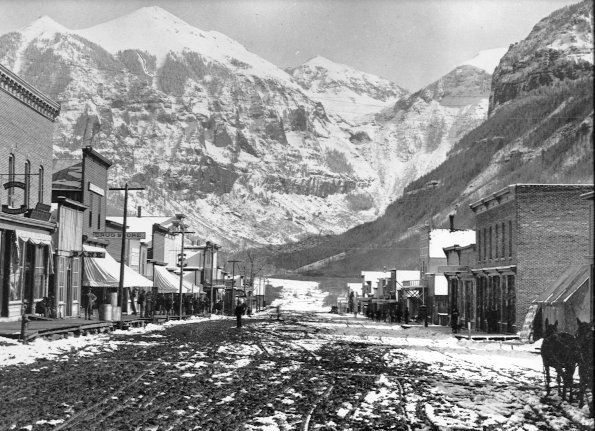Power in Colorado
Today, we install a dynamo on a mountain top. The University of Houston's College of Engineering presents this series about the machines that make our civilization run, and the people whose ingenuity created them.
An odd seam cuts across our thinking about the American West. We see a Wild West of cowboys and Indians on the one hand, and a modern West on the other. That's because the transition was abrupt. In the 1870s most of the West was still out of reach of telegraph and railroads, and it was served only by the most elementary waterwheels and windmills. By 1900 all that had changed.
Let's look at one example of the transition -- the arrival of electric power in Telluride, Colorado. In 1888 Telluride was a gold-mining town up in the west slopes of the Rockies. The gold rush was over. Telluride had settled into the energy-intensive work of tunnel-mining and milling low-grade ore to get at the gold. The work was powered by small steam engines. First people burned up all the local wood. Then they used burros to cart in coal. Coal was costing $40 a ton -- an outrageous price in 1888.
The "Gold King" Company was on the verge of going bankrupt when someone pointed out what was going on in the East. Six years ago, Edison had put the first public electric power system on line. He'd set up the Pearl Street Station in New York City to supply his new electric lights. And George Westinghouse had quickly followed suit with a system in Massachusetts.
The "Gold King" Company wasted no time. In three years they had their own electric power system in place. A 6-foot Pelton water-turbine, off in the mountains, drove a pair of 100 HP dynamos. Power traveled 2½ miles in bare copper wire, at 3000 volts, to an electric motor at the mine. Stories are told about workers breaking 6-foot electric arcs around the motor by waving their hats through them.
The system was installed in an environment of blizzards, avalanches, minus-40-degree cold snaps, and enormous water-flow variations -- all far from any sort of technical support. In 1891 the company opened a school to train a kind of rough-hewn electrical engineer to deal with the system.
By today's standards, the technology was downright hair-raising. But it was a beginning, and a beginning that expanded like brush fire. In twenty years' time these two 100 HP generators had grown into the Telluride Power Company -- supplying 40,000 HP to three states.
The brash people who went into the Rockies to dig gold weren't inclined to be bashful about taking on a new technology. Somehow, you can still see the cowboys and Indians in this hell-for-leather transition to a modern America.
I'm John Lienhard, at the University of Houston, where we're interested in the way inventive minds work.
(Theme music)
This episode has been greatly revised as Episode 1656.

The view looking east down the the main street of early Telluride